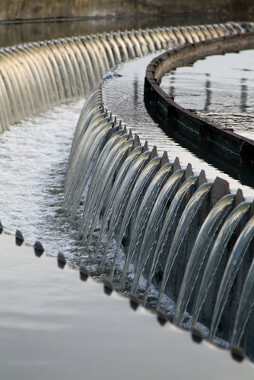THE Water pollution it is one of the most worrying forms of environmental pollution, given the great dependence on water for survival and for the development of society, than water that we have to use in our daily activities is little (only 0.03% of all the water on the planet) and that other forms of pollution, such as air and soil, usually end up reaching the waters.
For this reason, it is essential to take actions to reduce water pollution. Among the pollution control measures, we have the treatment of effluents, that is, the set of liquid waste released into the environment, such as domestic sewage, agriculture and that which is the result of industrial activities. These last two, mainly, constitute types of effluents that can be quite harmful, as they can contain heavy metals, oils and other substances that cause serious environmental problems.
Therefore, the effluents need to be treated before being released into the water. The ideal treatment for each type of effluent is indicated according to the polluting load and the presence of contaminants. There are several types of technologies used for this purpose, but the main types of effluent treatments can be summarized in three:
primary, secondary and tertiary treatments. Here we will talk specifically about the primaries, the others can be seen in the texts listed at the end of this article.* Primary treatment:It is one that uses physical-chemical processes to separate suspended solids and floating materials from water. Examples:
-
Railing: This treatment is used, for example, in ETAs (Water Treatment Plants) where water is collected from rivers, lakes or wells passes through grids placed in strategic places to prevent the passage of debris (and also fish and plants).

Water passing through one of the types of fences in a water treatment plant -
Decantation: This is a physical technique for separating mixtures formed mainly by solids into liquids. It consists of leaving the mixture at rest so that, due to the difference in density and the action of gravity, the solids settle, that is, deposit at the bottom of the container to be then separated from the liquid part, which remains on.

Settling tanks in a water treatment plant -
Flotation: It is a physicochemical separation technique that consists of adding air bubbles to a colloidal suspension. Suspended particles adhere to these bubbles and are drawn to the surface of the liquid, forming a foam that can then be removed from the solution.

Flotation tank in water treatment plant -
Oil separation: Water-oil separators (SAO) are commonly used, which are equipment that employ physical methods such as the density and tendency of the oil to float on water. This is especially important for effluent from maintenance areas, vehicle washing and machine shop machines that are often contaminated with oils and greases.
Another technique is electrocoagulation (EC), which is performed by passing an electric current through water, which destabilizes the solution and coagulates the contaminants, because electric fields provide redox reactions that lead to less reactive, insoluble, and higher chemical states. stability. These insoluble flakes formed can then be separated from the water by the other techniques mentioned, such as decanting and flotation.
Equalization: The function of the equalization basin is to make the system robust by absorbing sudden variations in the quality of the effluent.
-
Neutralization: Chemicals are used to neutralize the pH of the effluent.

Neutral pH is equal to 7
After these steps, the effluent is still not safe to be released into the environment. It still needs to go through the treatments shown in the following texts:
Secondary effluent treatments;
Tertiary effluent treatments.
By Jennifer Fogaça
Graduated in Chemistry
Source: Brazil School - https://brasilescola.uol.com.br/quimica/tipos-tratamento-efluentes.htm
